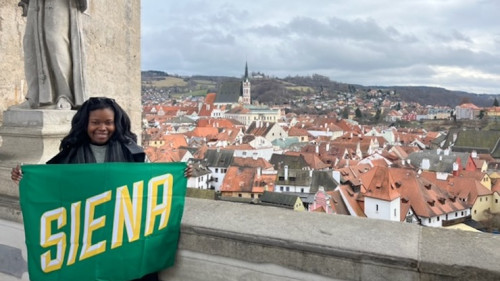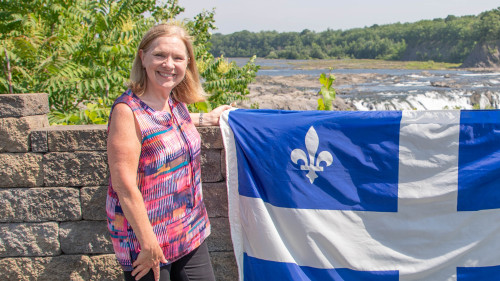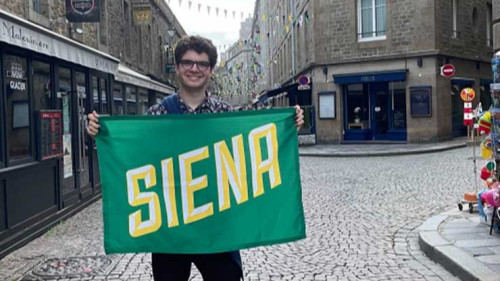
Don’t touch the candy and soda! It’s not for you.
In America, families hand out treats to kids who come to the door on Halloween, but in Mexico and other Latin American countries those sweets are placed on an altar to honor the dead on Día de los Muertos (Day of the Dead).
The two holidays have roots in common with All Saints Day (November 1) and All Souls Day (November 2), and to explore its role in Spanish culture, a class taught by Lisette Balabarca, Ph.D. researched Día de los Muertos and set up an altar de muertos in Kiernan Hall, similar to those created with love by many Mexican families to honor relatives and friends who have passed on.
“It's a fun way to put into practice what they learn in the classroom,” said Balabarca, associate professor of Spanish. “Communication in Spanish I is a mix of oral, reading, writing and grammar activities. When students learn a new language, it also involves learning about different cultures from the Spanish-speaking world.”
She asked students to set up the altar as a course project to learn about tradition and cultural practices. These altars traditionally feature candy, fruit, drinks, candles, real or paper flowers, models of skulls, colorful flags – anything that might delight and celebrate those who are now in spirit or transitioning to the afterlife.
The students also chose a deceased famous person from the Spanish-speaking world to be honored and wrote brief essays (in both Spanish and English) about their lives and accomplishments: they selected labor activist Cesar Chavez, artist Frida Kahlo, Argentinian soccer standout Diego Armando Maradona and Tejano singer Selena Quintanilla Pérez.
Madison Tinker ’25 said that although Día de los Muertos is not part of her personal culture, she thinks it was “incredibly important” to learn about it and share it in a larger community.
“By doing this we can all be more knowledgeable and accepting of the practices of others,” said Tinker. “The opportunity to set up an altar and learn more about the culture behind Día de Los Muertos gave me the opportunity to better understand the culture and the cultural needs of those around me.”
Asavari Gowda ‘24 said the altar set up by her class was “our small way of celebrating a beautiful, vibrant, spiritual event that is celebrated in Mexico, other Latin countries, and Latino homes around the world.
“I hope to have the opportunity to experience Día de los Muertos in Mexico to see its traditions and celebrations first hand.”

